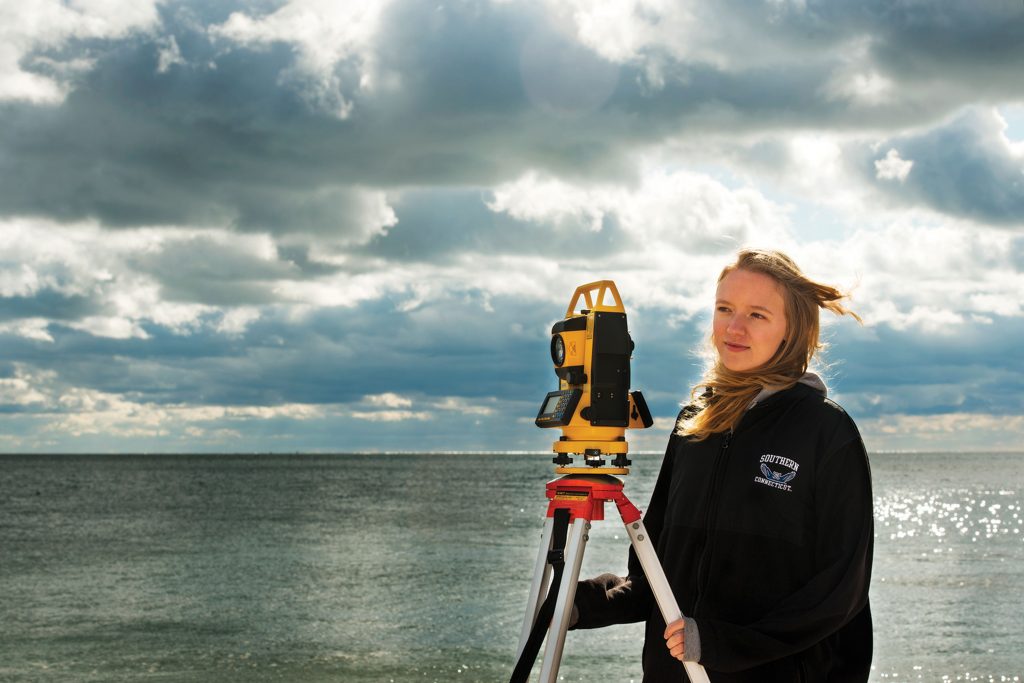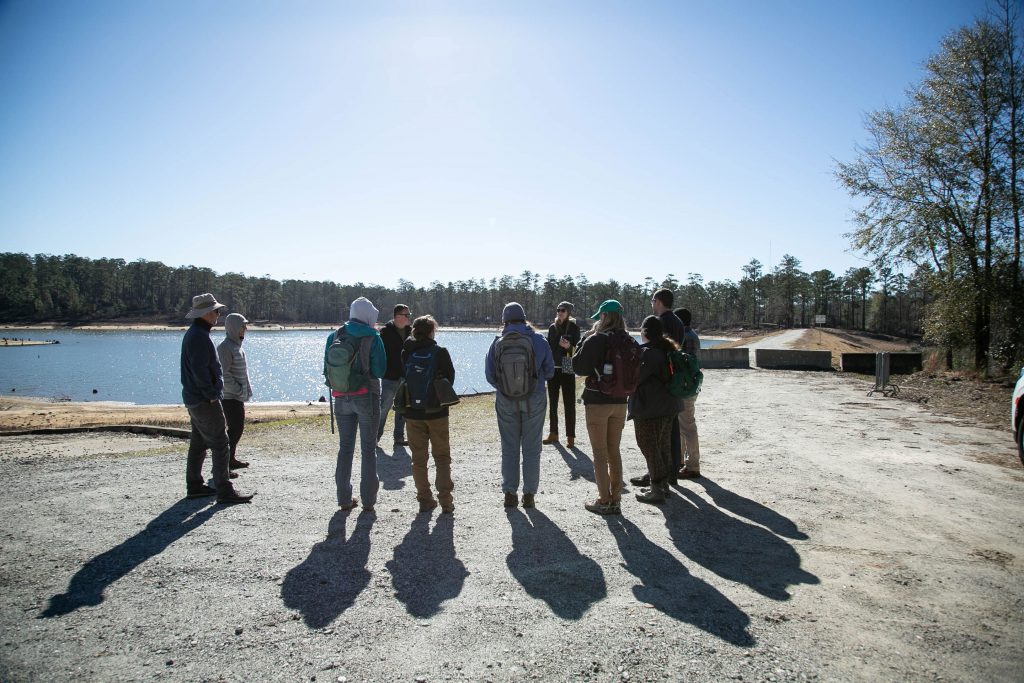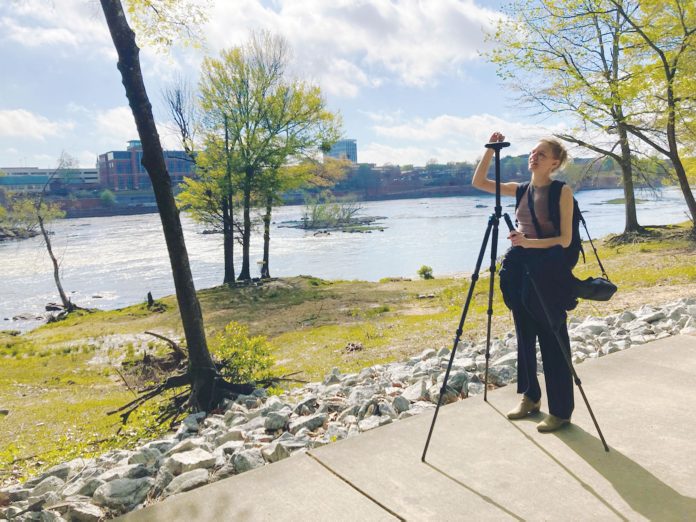Looking out from the Icelandic shore at a glacial lagoon, Michelle Ritchie, ’15, saw the changes in the landscape. A larger parking lot and more buildings. The icebergs now far off in the distance. “They were taking people out on boats, burning what looked like smoky diesel. It felt almost apocalyptic,” says Ritchie.
She had first visited the spot in summer 2013 as a Southern geography major (environmental studies concentration), participating in a field study led by Patrick Heidkamp, professor of the environment, geography, and marine sciences. Nine years later, Ritchie was leading the charge as an assistant professor at the Institute for Disaster Management at the University of Georgia. In a full-circle moment, she was supervising two student-researchers. All were interviewing local inhabitants about the impact of climate change — and at this moment, Ritchie’s own thoughts were dire.
“I knew it would be different. But nothing was the same,” she says, of the still stunning site. “Everyone was looking at this beautiful scenery, happily taking pictures. Meanwhile, I was mourning how rapidly it was changing.”
Ritchie has always been drawn to nature, an only child raised in a house with a small garden and pets “who were almost like siblings.” Her mother worked with dogs (primarily as a dog walker), while her father, who held an associate degree, repaired vacuums. “He has that tinkering, problem-solving trait that translates into science,” says Ritchie.
When it came to planning her own future, Ritchie knew she wanted to work outdoors and make a difference. But she didn’t know what that career might look like. “I wasn’t sure what I wanted to do after high school if I’m being totally honest,” says Ritchie, a first-generation college student. She thought a bit about trade school, then applied to two colleges. One was Southern. After visiting campus with her mom, she knew it was the right fit. “It was a gut feeling,” she says.
She found her major — and ultimately her professional calling — in the early days of her undergraduate studies. She credits several classes taken to meet Southern’s liberal arts requirements: an environmental course taught by Suzanne Huminski, sustainability coordinator, and a geography course from Heidkamp. “They were these amazing people, talking about everything I was interested in,” says Ritchie, who had found her major. “I just threw myself into it.”

Often, that meant asking for opportunities. “It started with me eavesdropping,” says Ritchie, of overhearing James Tait, former professor of science education and environmental studies, talking with a colleague after class. It was fall 2012, several days after Hurricane Sandy had devasted the Connecticut coast. Tait, then co-director of Southern’s Werth Center for Coastal and Marine Studies, was planning to assess the damage. Ritchie asked if she could come along.
It was a life-changing outing. “I could see a path forward. . . . That’s when I started learning more about disasters, natural hazards, and the environment, and it was absolutely fascinating,” she says.
Working with Tait and student-researchers, she assessed beach erosion and coastal storm damage. (The U.S. Army Corps of Engineers used the study while working on a coastal resilience project.)
“He was so instrumental,” says Ritchie of Tait, who died in April 2021. “He’d say, ‘Of course, you can do this,’ and you would believe.”
Additional research opportunities and activities further enriched her undergraduate experience. For her capstone, Ritchie assessed the experiences of people living in a New Haven “food desert,” a geographical area where affordable, nutritious food is difficult to obtain. She also traveled to Africa on another short-term study abroad program, joined the Geography Club, and honed her creative talents writing for Folio, Southern’s undergraduate art and literary magazine.

An internship with Southern’s Office of Sustainability was particularly transforming. The responsibilities were far-reaching. Ritchie worked in the university’s organic community garden and on-campus Swap Shop (a spot for faculty/staff to donate office supplies and find needed items for free). She even helped establish an on-campus composting program.
“I absolutely love where I am now, but that was probably the coolest job I’ve had,” she says, lauding the mentorship of Huminski and Heather Stearns, recycling coordinator at Southern.
“There are a lot of male-dominated spaces in the field of geography and science, in general. It was awesome to see how successful females, with different leadership styles, had forged their way,” she says.
Today, Ritchie is doing the mentoring, armed with a doctorate in geography and climate science from Pennsylvania State University and a master’s from Binghamton University in New York.
Her commitment to research remains ironclad. Iceland — the site of that early undergraduate study abroad program — is an enduring focus. Alaska is another. Ritchie is on a team of scientists from multiple universities, who are studying seismic resilience in Alaska with a grant from the National Science Foundation. Alaska has 11 percent of the world’s recorded earthquakes.* Compounding matters, its infrastructure — roads, pipelines, and buildings — is built over permafrost, which is being rapidly lost due to rising temperatures.
“So, now when we think about earthquakes, you no longer have that stable soil,” explains Ritchie. As a result, a magnitude 8 earthquake that hit 50 years ago is likely to have a dramatically different outcome than the same size earthquake 50 years in the future.

It’s a dream project, says Ritchie, of her slice of the initiative: working with native populations in the Copper River Valley to coproduce knowledge using participatory mapping. The residents, she explains, will help shape the research, including its focus. The story could be about seismic resilience. Or, perhaps, a focus on environmental monitoring. “In my eyes, it’s the most ethical way to work with native populations,” she says of this first-time opportunity.
Teaching will also remain a focal point. “There is so much energy that the students bring,” she says. When it comes to research, she is committed to passing the torch: 15 students responded to a research opportunity she posted about transcribing the interviews from Iceland. Ritchie welcomed them all.
And then there are the two student-researchers who accompanied her to Iceland last summer. It was the end of the spring semester, and Ritchie was sharing a bit about her upcoming research trip. “Can we join,” one asked. “They paused for a second when I said, yes. I think they thought I was joking,” says Ritchie. A few hours later, flights were booked.
It’s growing the tribe, explains Ritchie. She mentions a handful of names — Tait, Heidkamp, Huminski, and Stearns. “I think of how they helped me. How could I not say, yes?” she asks. ■
*Seismic.Alaska.gov


